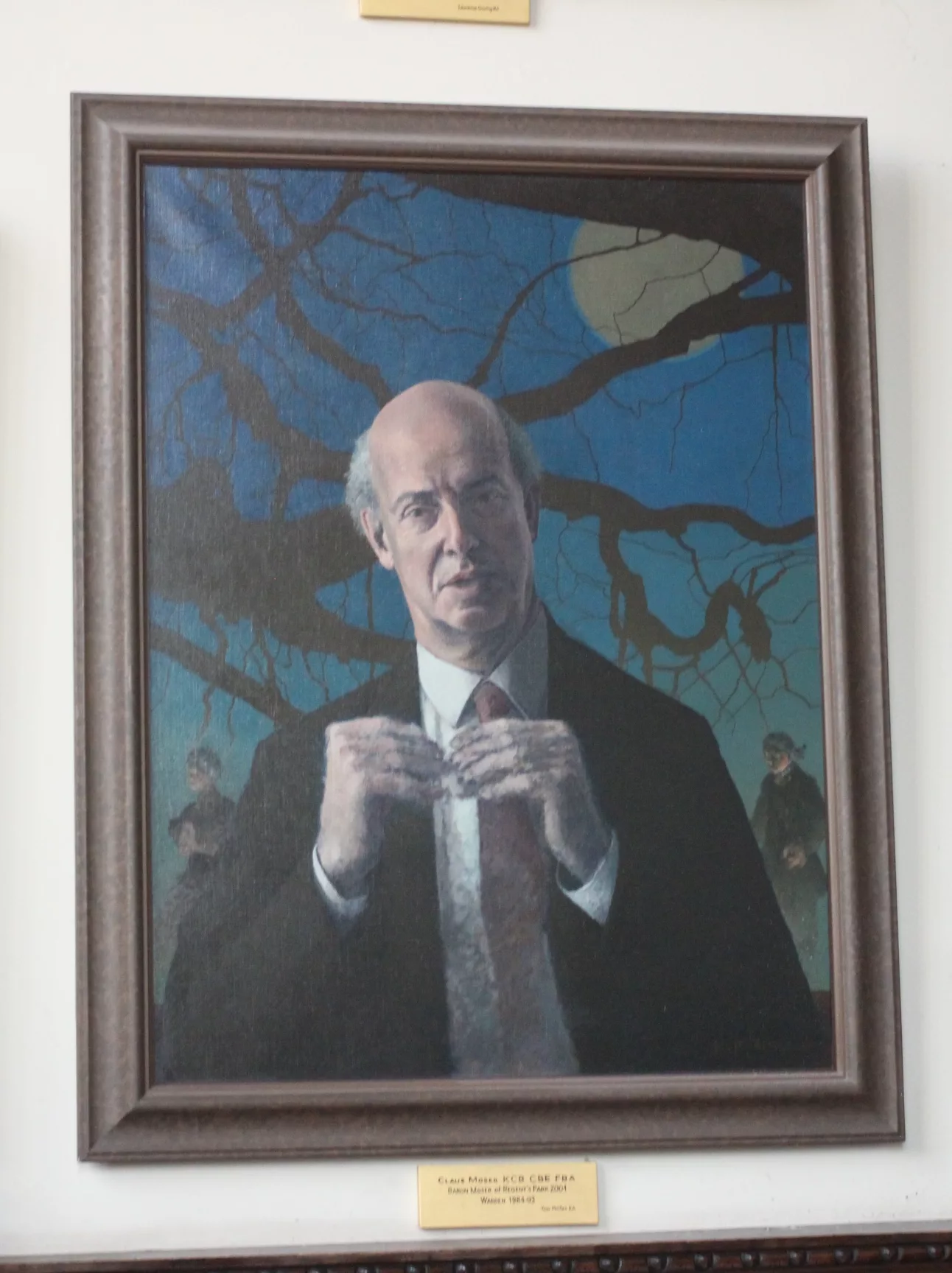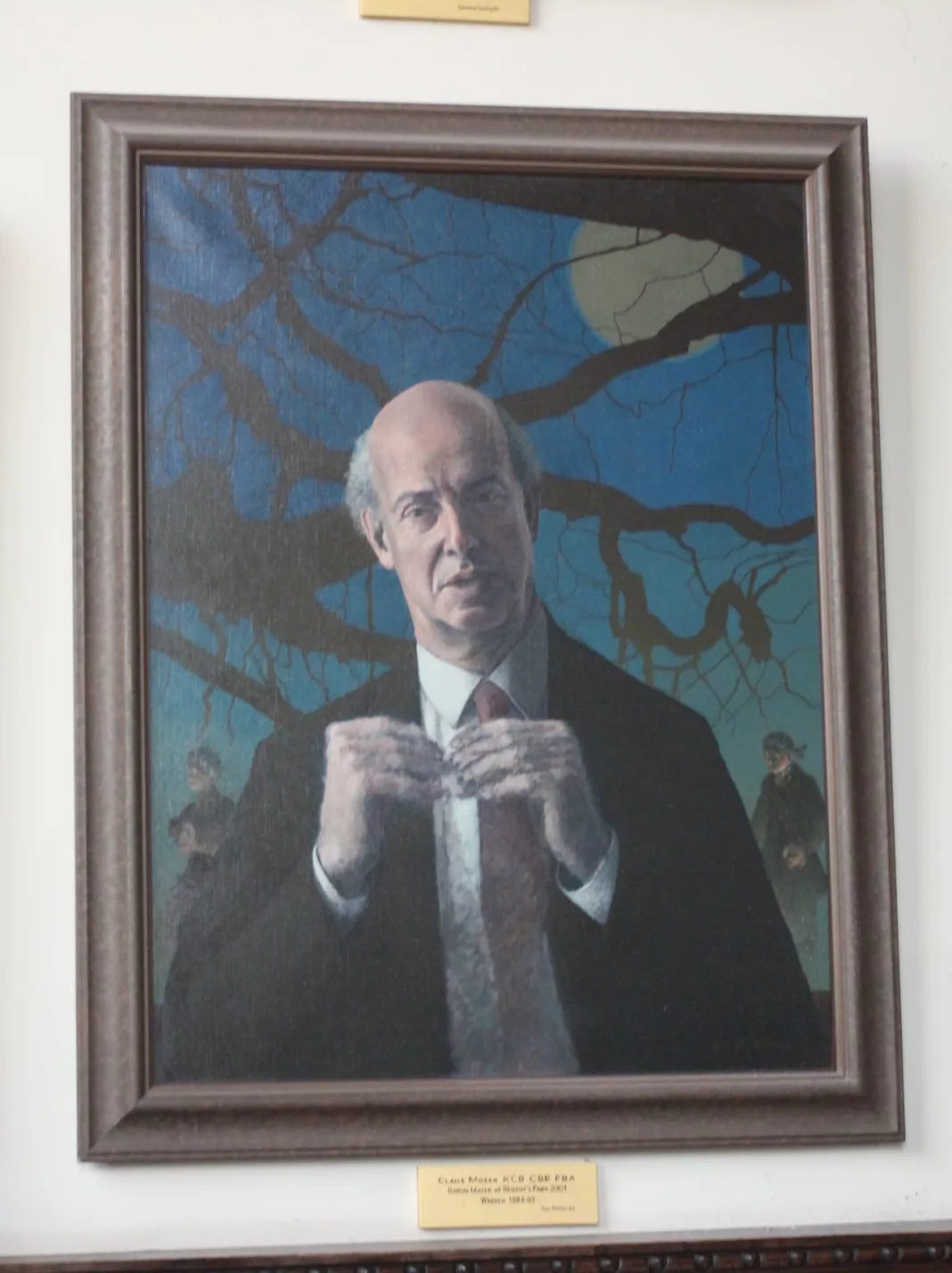With each new warden elected at Wadham, a new portrait is commissioned for the walls of the dining hall. Most commonly we think of these portraits as highly stylized and antique, with an embedded sense of austerity. When Sir Claus Adolf Moser was appointed warden in 1984, he commissioned Tom Phillips to paint his portrait for him. Moser, like all other newly appointed wardens, had full patronage and control over his college portrait allowing him to portray elements of his personality within the piece. However, he decided to change the way we look at collegiate Warden portraits forever.
Situated at the very back of Wadham’s dining hall stands the portrait of Moser musing in a night-time forest of beech trees; their branches and twigs break up the glow of the moonlit sky behind them and a gradient of fog lay beneath them. Moser sits in the foreground of the image staring wryly at the viewer. Roland Barthes would call his hands the punctum of the image,1 because our eyes are immediately drawn to them. The hands appear more washed out than the rest of the painting, as the edges of the lines blur into his body behind him and the blue and purple shadows contrast the back of his hands where the moonlight hits. Our eyes then skim up to the face of the man and then to the fragments of the night sky that reside behind him.
I believe the blurring of the hands in this portrait is a deliberate technical element used symbolically by Phillips to reference Moser’s love for music and skill as a pianist, a unique attention to detail seldom found in portraits commissioned by academic institutions. Moser fled with his family to Britain in 1936 to avoid Nazi persecution. At school, he was recognised for his musical abilities and learned how to play the piano. In 1940, he was awarded a place at the London School of Economics (LSE) where he continued to play the instrument and perform in university concerts. Later on, after the end of his wardenship, Moser was invited by a group of students back to Wadham to play a Mozart concerto with some musicians from Tokyo–a testament to his legacy and musical talents.

Another aspect of this portrait which reveals Moser’s personal character is seen in the background. We see two figures, both wearing regency wigs and vestments as they trail behind one another in the fog. These figures represent the Countess and Figaro in an attempt to convey the last scene from ‘The Marriage of Figaro,’ Moser’s favourite Opera. The fog almost appears to spotlight his figure as if he himself is an actor on stage. This is likely a reference to his active role as a member of the board at the Royal Opera House from 1964, for which he became chairman a decade later, a position he held in the highest regard.
The end result of the painting makes for a brilliant enquiry into the relationship between the painter, institutional patronage and the sitter. Moser is presented as part of a much broader sense of academic standing and the painting gives us a glimpse of each individual aspect of his character.
Image Credit: Rhea Brah
- Barthes, Roland. Camera Lucida. Translated by Richard Howard, Vintage Classics, 1993. ↩︎


